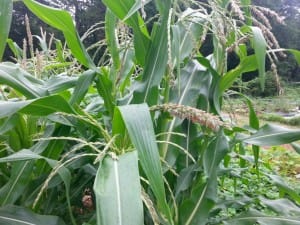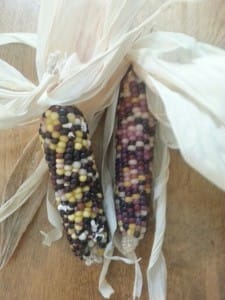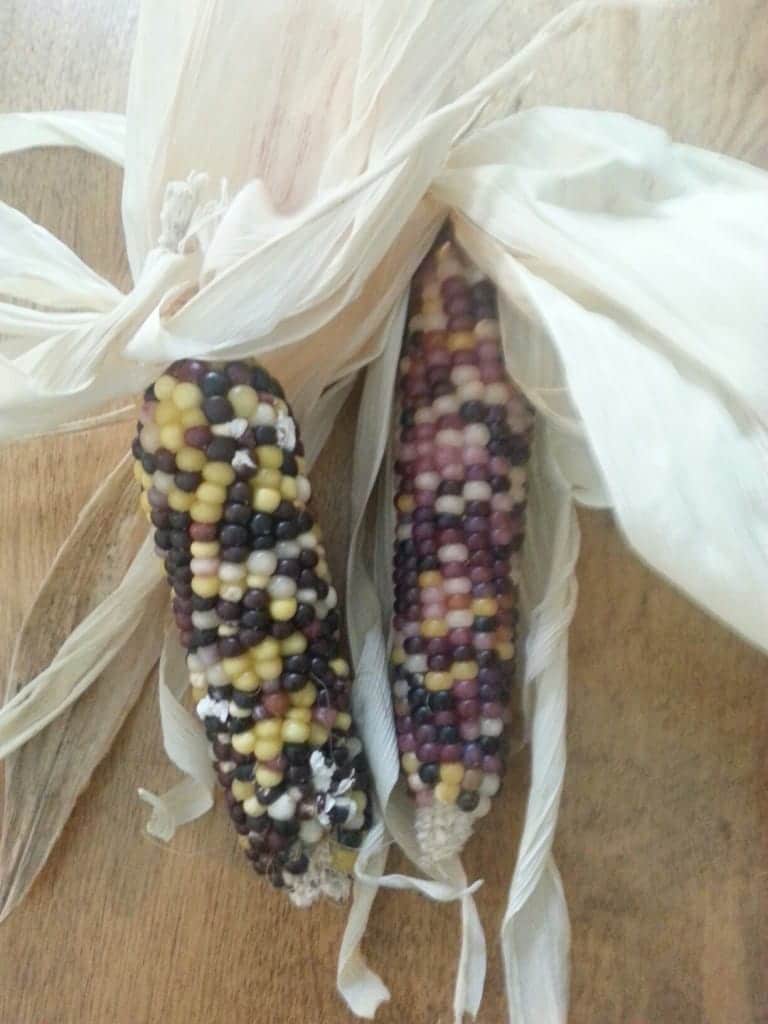
Sweet corn can be a challenge to grow in the community garden, especially for the one to two ears you get for each corn stalk. It can shade your other crops, or your neighbor’s. Some community gardens have rules that prohibit growing corn for that reason. Popcorn can be another story. The cultivars can be shorter than sweet corn and even though the yield is about the same, you can make popcorn last a long time.
Tom Thumb popcorn grows to be about 3 feet tall and is a popular cultivar all over the country. Pennsylvania Butter Flavor, Dakota Black, and Cherokee Long Ear are cultivars Master Gardeners have had great success growing in Georgia. Know that all corn types, including popcorn, are heavy feeders so make sure you have good fertility in the soil. If you can plant the corn where a legume has been growing – fantastic! The legume will have added nitrogen to the soil for you! You will want to add some compost or nitrogen when the corn is about 6 inches high and again when it is about knee high.
Sow twice as many seeds as you think you will need and thin to about 8-12 inches apart. Keep weeds at bay and when the corn is about knee high add soil over the exposed roots for good support. If you decide to try growing popcorn this late in the season, determine how many days until maturity (usually this information is on the seed package) and make sure it will have time to mature before frost.
The trick to successfully growing popcorn is to know it is wind pollinated. The pollen of the male flowers (the tassels) need to

reach the female flowers (the silks). Especially when you are growing limited amounts you want to think “blocks” instead of “rows”. Planting in squares will drastically improve pollination as the wind-blown pollen grains will have a better chance at landing on another corn stalk. So for a 4′ X 8′ plot you could have four stalks across and at least four stalks down the plot for a total of at least 16 stalks. With this plot size, know popcorn would take up at least half of your plot area. This would probably be a minimum for good pollination. You could always help the wind out by gently shaking the stalks yourself!
The wind pollination can be an issue if another community gardener is also growing another type of corn, especially if either one of you is planning on saving seed. You could get cross- pollination. You may want to separate your planting dates by a couple of weeks so that the corn doesn’t tassel at the same time. Or maybe you all can grow the same type of popcorn.Your local Extension Agent has all types of information on growing all types of corn.
Let the popcorn ears remain on the stalks until the husks are dry. The downside here is this takes time that could be used to start another crop. Bring it inside to finish drying for several weeks. You can remove the corn kernels from the ears by hand, by twisting the kernels off or by rubbing two cobs together. Experience teaches that it is fairly easy to remove them by flicking them off with your thumb. This winter when there is a nice fire in the fireplace and a good book in hand, you will appreciate the time and effort it took to grow your own popcorn!
Happy Gardening!
- ParSLAY the Day! - June 12, 2024
- 6th Annual Great Southeast Pollinator Census - May 28, 2024
- Are you ready for Pepper Palooza? - July 5, 2023

Nice! Perhaps a follow-up post later in the year on how best to prepare your popcorn for those who only know the “microwave” variety?
I ordered popcorn seeds from England this year. The packages said they grew to 4ft, but they grew with all this rain to 6ft. They made large ears, two to the stalk. I haven’t tried them yet, the package said to dry the ears on the stalks.
Jeri, do you remember the popcorn cultivar name? I hope it turns out to be delicious!